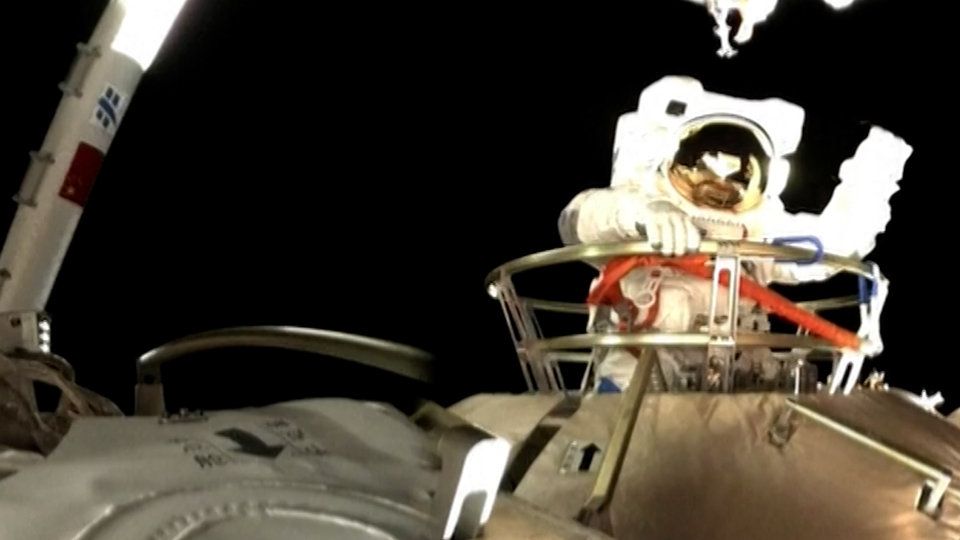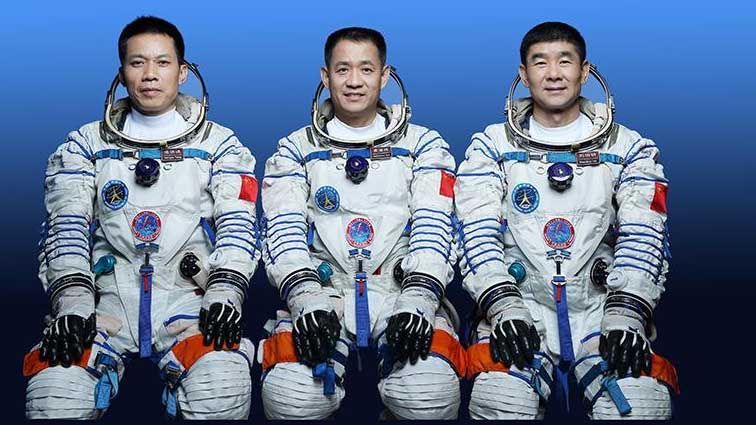Chinese Astronauts Conduct First Spacewalk at New Space Station
Article from Agence-France Presse July 4, 2021 (theguardian.com)
• In June, three Chinese astronauts blasted off to become the first crew of the new Tiangong space station in orbit around Earth, where they will remain for three months in China’s longest crewed mission to date. On July 4th, two of the astronauts conducted the first of two seven-hour spacewalks to work on assembling the Tiangong space station. Fueled in part by a U.S. ban on Chinese astronauts on the International Space Station, the construction of the Tiangong space station is a significant step in China’s ambitious space program.
• China previously landed a rover on Mars and sent probes to the Moon. This is China’s first crewed mission into space in nearly five years, and the first time since 2008 that Chinese astronauts have gone outside their spacecraft. China is the third country to complete a spacewalk after the Soviet Union and the US. This is a matter of huge prestige as the country marks the 100th anniversary of the ruling Communist party this month with a massive propaganda campaign.
• In this first spacewalk, astronauts Liu Boming and Tang Hongbo were tasked with elevating a panoramic camera outside the Tianhe core module and testing the station’s robotic arm which will be used to transfer future modules around the station. The astronauts also installed foot stops on the robotic arm and carried out other assembly work. The crew underwent more than 6,000 hours of training in preparation.
• In a video clip, Liu and Tang were shown opening a hatch and exiting the module separately, wearing newly developed suits. They were supported from inside the station by the mission commander, Nie Haisheng, a decorated air force pilot who is on his third space mission. The video clip showed Liu leaving the cabin, exclaiming: “Wow, it’s too beautiful out here.” The Chinese space agency is planning a total of eleven launches through to the end of next year, including three more crewed missions. They will deliver two more lab modules to expand the station, along with supplies.
• Chinese state television showed footage of the astronauts’ daily lives on Tiangong, including setting up an exercise bike and working out on a treadmill. One crew member was shown eating with chopsticks; another did a handstand and somersault after mealtime. The televised spacewalk garnered 200 million views on China’s social media platform Weibo. One user wrote: “How much I’m moved by each step of achievement is beyond words.”
• President Xi Jinping has said the construction of China’s first space station is opening “new horizons” in humanity’s attempts to explore the cosmos. The Tiangong space station is expected to have a lifespan of at least ten years, and China has said it would be open to international collaboration on the station. The U.S.-run International Space Station is due for retirement after 2024, although NASA says it could remain functional beyond 2028.

Chinese astronauts have performed the country’s first tandem spacewalk, working for seven hours on the outside of the new Tiangong station in orbit around Earth.
working for seven hours on the outside of the new Tiangong station in orbit around Earth.
Tiangong’s construction is a significant step in China’s ambitious space programme. China has previously landed a rover on Mars and sent probes to the moon.
Last month, three astronauts blasted off to become the first crew of the station, where they will remain for three months in China’s longest crewed mission to date. On Sunday morning, two of them left the station for about seven hours of work in the  first spacewalk at Tiangong, the China Manned Space Agency said.
first spacewalk at Tiangong, the China Manned Space Agency said.
“The safe return of astronauts Liu Boming and Tang Hongbo to the Tianhe core module marks the complete success of the first spacewalk in our country’s space station construction,” the agency said.
Their tasks included elevating a panoramic camera outside the Tianhe core module and testing the station’s robotic arm, which will be used to transfer future modules around the station, state media said. The astronauts installed foot stops on the robotic arm and, with its support, carried out other assembly work, the space agency added.

In a video clip of Liu leaving the cabin, he exclaimed: “Wow, it’s too beautiful out here.”

Liu and Tang were shown opening a hatch and exiting the module separately, wearing newly developed suits said to weigh 130kg (20st). They were supported from inside the station by the mission commander, Nie Haisheng, a decorated air force pilot who is on his third space mission.
This was the first of two spacewalks planned for the mission, both expected to last six or seven hours. It was the first time since 2008 that Chinese astronauts have gone outside their spacecraft. Back then, Zhai Zhigang made China the third country to complete a spacewalk after the Soviet Union and the US.
This is China’s first crewed mission in nearly five years, and a matter of huge prestige as the country marks the 100th anniversary of the ruling Communist party this month with a massive propaganda campaign. To prepare, the crew underwent more than 6,000 hours of training.
2:49 minute video pf first spacewalk on the Chinese space station,
July 4, 2021 (‘SciNews’ YouTube)
FAIR USE NOTICE: This page contains copyrighted material the use of which has not been specifically authorized by the copyright owner. ExoNews.org distributes this material for the purpose of news reporting, educational research, comment and criticism, constituting Fair Use under 17 U.S.C § 107. Please contact the Editor at ExoNews with any copyright issue.


 JIUQUAN, China — A Chinese rocket blasted off from a launch pad in the Gobi
JIUQUAN, China — A Chinese rocket blasted off from a launch pad in the Gobi Desert on Thursday, sending three astronauts on a historic mission to an orbiting space station China is building.
Desert on Thursday, sending three astronauts on a historic mission to an orbiting space station China is building.
 construction of China’s 70-ton Tiangong or Harmony of the Heavens space station that is set to be up and running by next year.
construction of China’s 70-ton Tiangong or Harmony of the Heavens space station that is set to be up and running by next year.





